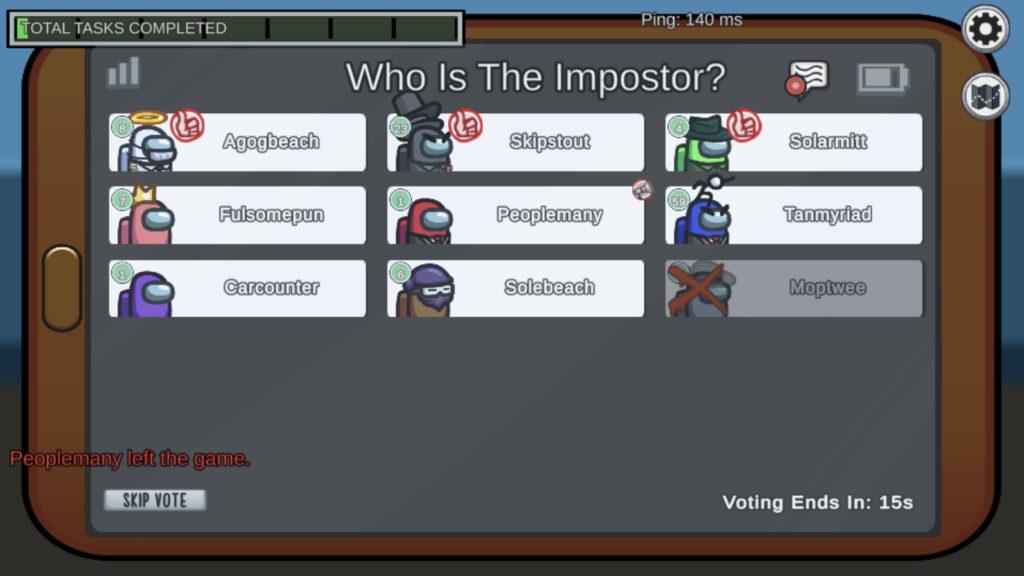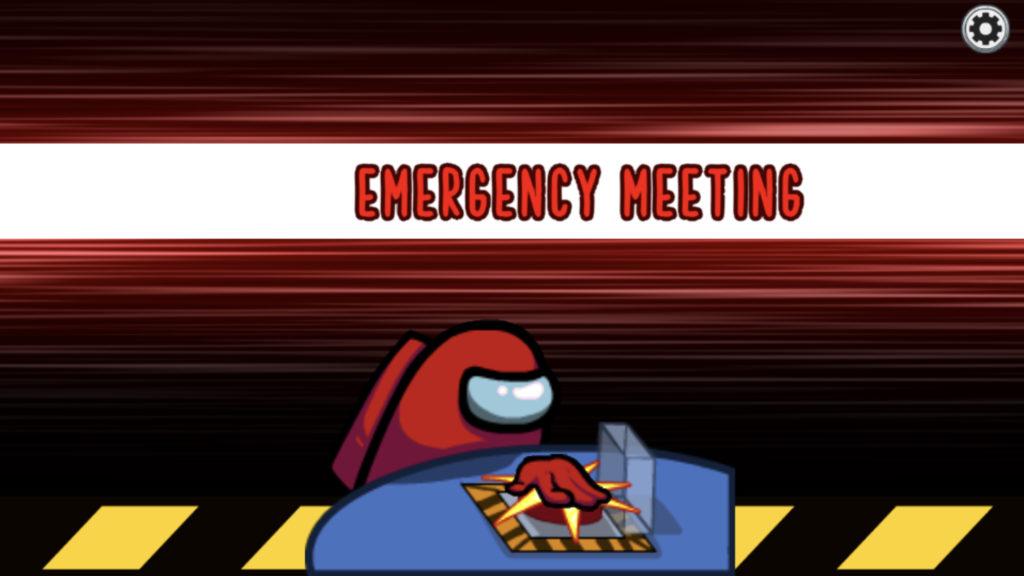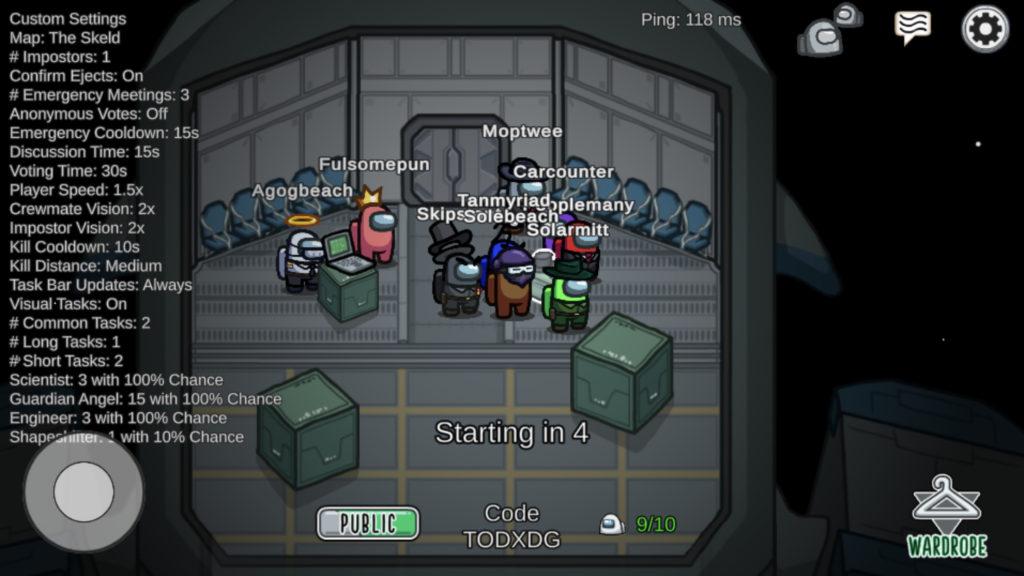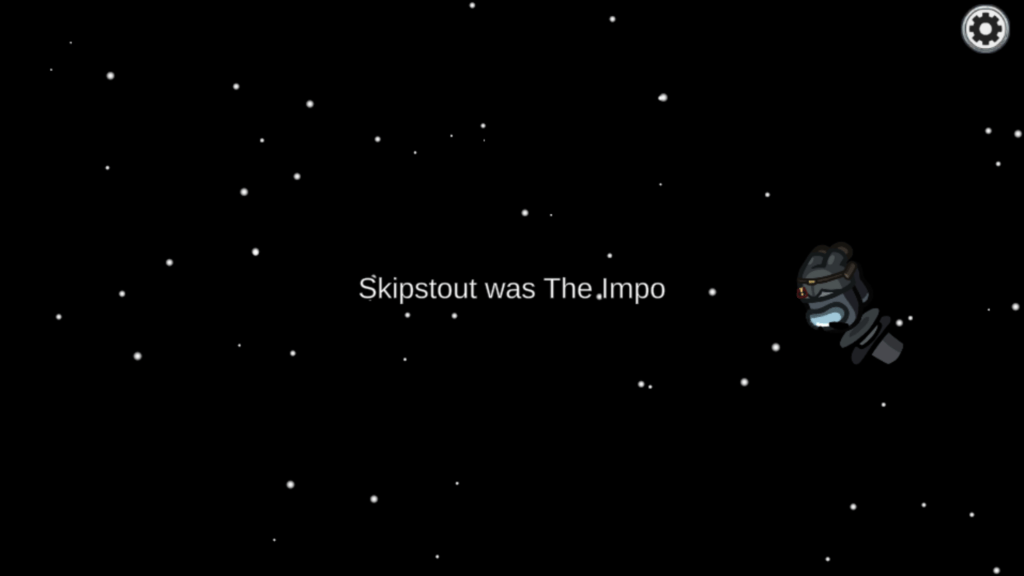Among Us is “a party game of teamwork and betrayal” made by Innersloth games, and it can be found on just about every platform with a screen. In my opinion the target audience is quite broad, maybe 8-40 year olds, skewing heavily towards the younger demographics.
Notable Elements of the Game

Players: team competition between the crewmates and the imposters, with the possibility of having only one imposter, which effectively turns into unilateral competition.
Objectives: For crewmates, the primary objective is outwit to find who the imposter is, and the secondary objective is “rescue” because they can also win by finishing all the tasks before the imposter kills all the crewmates. For imposters, the primary objective is “capture” because they need to kill all the crewmates, and their secondary objective is outwit to hide their identity and throw other crewmates under the bus.
Rules and procedures: Crewmates move around the ship completing tasks until a dead body is found or an emergency meeting is called, at which time the survivors meet and decide on a player to eject. Imposters kill crewmates (their kill ability has a cooldown) and try to stay undetected. Here are some additional rules and procedures that I thought were particularly interesting:
- Anyone can report a dead body. At first, our player group would always trust the person who reported the body, as imposters would usually commit a murder and get as far away as possible. But then one imposter started reporting his own kills and won by confusing everyone else. I thought this provided some interesting strategic options for imposters.
- Dead crewmates turn into angels who can fly around giving temporary shields to living crewmates that prevent them from being killed. As we discussed in class, an important element of any party game is how to keep the players who are “out of the game” engaged, and I thought having angels is a brilliant method of achieving that.
- One crewmate is randomly chosen as scientist, who has the ability to see who’s dead/alive at any time during the game. This is really useful information especially since we only had 6 players, so it took a really long time for dead bodies to be discovered sometimes, allowing the imposter to commit murders unopposed. However, calling an emergency meeting revealing that you are the scientist quickly puts a target on your back, and choosing when/how to reveal this information is interesting gameplay.

- An emergency meeting can be called at anytime. This is quite different from traditional social deduction games like Mafia, where such procedures do not exist. Calling an emergency meeting as a crewmate can give you more time for discussion, save crew mates from being murdered, and save the group in otherwise impossible situations (e.g. two crewmates and an imposter left. The crewmates know as soon as the imposter’s kill is off-cooldown, they will lose the game). While imposters can call emergency meetings to prevent the location of bodies from being discovered. Again, this mechanic adds a lot of depth to the gameplay.
- Imposters can also sabotage the ship by locking doors that required time to reopen or creating time-sensitive emergencies that must be fixed, and they can also use vents to teleport around the ship. This allows imposters to have more agency and be more active in killing the crewmates, as they can use these tools to create opportunities rather than just walking around hoping to catch a crewmate alone.
How it compares to other games in the genre + types of fun

Among Us is particularly fun because it is a digital implementation of the traditionally tabletop genre of social deduction games, and I think they have done an excellent job of retaining the core systems that make the tabletop-versions fun, while incorporating unique elements only possible with a digital game. The core gameplay loop remains the same: killers kill and lie while innocents attempt to stop them with discussions, thus the fun of fellowship is preserved. But, they added a physical space for interactions, so imposters can now be actually caught in their track. While some may argue this tarnishes the purity of social deduction games, where no physical evidences exist and all arguments must be solely based in the discussions, I think this solves one of the fundamental issues with traditional social deduction games: villagers have nothing to base their discussion on early in the game. With Among Us, discussions quickly became about corroborating each other’s routes and talking about who saw who going where, giving crewmates very solid threads to focus on even at the start of the game. In addition, new strategies like staying together for safety emerge. Of course, having a physical space to play in also means that the procedures of the game are enforced interactively: crewmates’ tasks are simple physical tasks like connecting wires by hand, and imposters have to actually chase down and suck the face off of their poor victims. This layer of interactivity, along with the colorful art style and wide range of customization options for the main characters, create the fun of fantasy, expression, and sometimes even sensation.
Epic fun and fail

One particular fun moment for me was in a game where I died and became a guardian angel. I carefully predicted who the imposter was after based on their movement pattern, and protected a crewmate from dying half a second before the kill. I was exhilarated I had pulled this off successfully, and I thought I had saved the day because the crewmate could call out the imposter for acting really suspicious, only to see the crewmate I saved defend the imposter for “not killing them when they had the chance” and ultimately losing the round. Even though we lost, I explained what happened after the game and everyone had a good laugh about it, and allowing even losing to be fun is hallmark of good game design. This particular moment perfectly showcases how the interactivity of Among Us (me protecting the crewmate with my skills) and the discussions modeled after traditional games meld together to create all types of unexpected fun.
One particular poor moment I encountered was when my playgroup switched to a different and larger map. For several rounds, the imposters won by simply killing everyone before bodies were discovered since the map was so big and complex. Among Us is particularly sensitive to this lack of players crossing-paths because kills don’t happen at a fixed speed like in Mafia (every night), so how many opportunities crewmates get to uncover the imposter is almost entirely dependent upon how often they discover dead bodies. I think a good easy fix is to clearly label the number of recommended players for each map, and design maps with greater connectivity to facilitate more interactions.
How else I would improve the game

I think adding more unique roles for crewmates would be awesome.
Some ideas I just thought of are
- Overseer – Has the ability to call emergency meetings from anywhere (still following the same cooldown rules)
- Janitor – Can also teleport using vents. This would not only be fun and useful for a crewmate, but can also give the imposter a defense when they are caught red-handed jumping out of a vent (they can say they are the janitor).
This would add even more depth to the gameplay.
Another major improvement I would make is to add an interactive map with the ability to mark a location with the portrait of a player and an action (chosen from a list of emojis) available during discussions. Since so much of the discussion in Among Us is based around “who last saw who where”, having a visual that help facilitate recognition over recall could be really useful.



